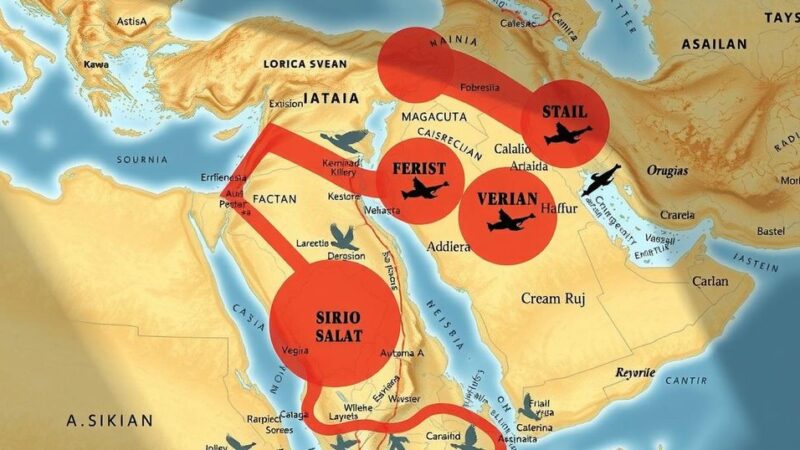This article discusses the historical complexities of the Lebanese-Syrian border, emphasizing recent tensions fueled by smuggling and international efforts to disarm Hezbollah. It highlights significant incidents, particularly in Qasr, and outlines the geopolitical implications of disarmament discussions that echo Resolution 1701.
The context of the Lebanese-Syrian border is rooted in the establishment of the two nations and the delineation of Greater Lebanon’s borders. This border stretches over 370 kilometers and includes convoluted curves and overlapping territories. Such geographical realities have fostered smuggling operations and disputes driven by a mix of interests among various factions and armed groups residing on either side of the border.
The dynamics along the border have intensified following the intent to sever Hezbollah’s arms supply routes through Syria, triggered by the ceasefire agreements in the south and the subsequent collapse of the Assad regime. Under the new leadership of President Ahmed al-Sharaa, initial efforts were made to de-escalate tensions with Lebanon and manage border control. However, challenges have emerged, particularly in regions like the Bekaa Valley, where Hezbollah holds substantial influence.
A significant confrontation arose recently in the town of Qasr involving armed groups from Syria and Lebanon, rooted in conflicts among smuggling cartels across the border. This incident is emblematic of deeper grievances that could recur, threatening to undermine the enforcement of United Nations Security Council Resolution 1701 amid shifting geopolitical circumstances in the Middle East.
The broader regional agenda reflects an international consensus aimed at disarming Hezbollah and consolidating all arms under the control of the Lebanese military. Current border confrontations, particularly around areas like Hawsh al-Sayyid Ali and Qasr, reveal a de facto demarcation influenced by Hayat Tahrir al-Sham’s presence in Syria, potentially leading to operations targeting Lebanese territories to enforce disarmament.
In 2025, the aspirations first articulated in 2006 through Resolution 1701—advocating the disarmament of local militias and possibly deploying international forces on the border—have resurfaced. The priority now appears to be the disarmament of Hezbollah, with the later deployment of international forces remaining a consideration.
The situation at the Lebanese-Syrian border remains precarious, with historical tensions evolving into contemporary conflicts fueled by smuggling and international pressures to disarm militant groups. The complexity of border dynamics, particularly following the Assad regime’s fall and Hezbollah’s influence, necessitates a nuanced approach to border security and disarmament. The potential return to international oversight, as hinted by previous resolutions, may redefine the region’s stability in the coming years.
Original Source: www.lbcgroup.tv






